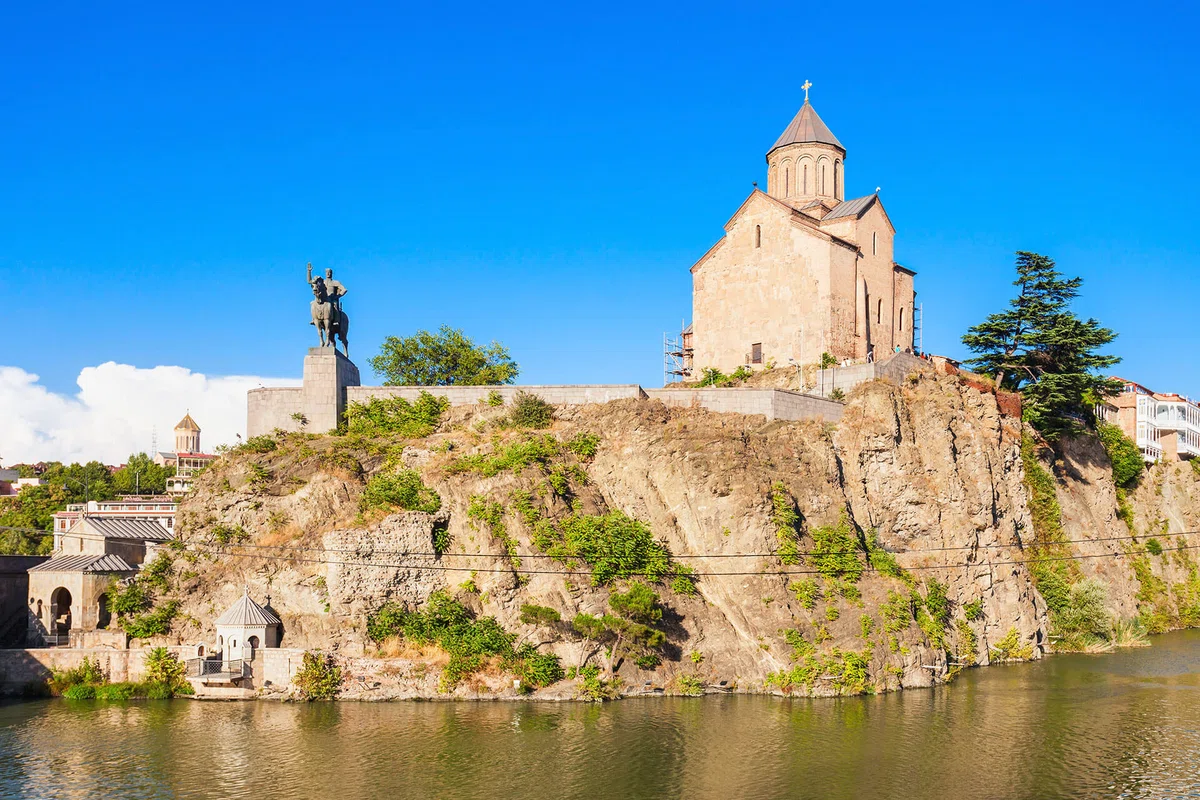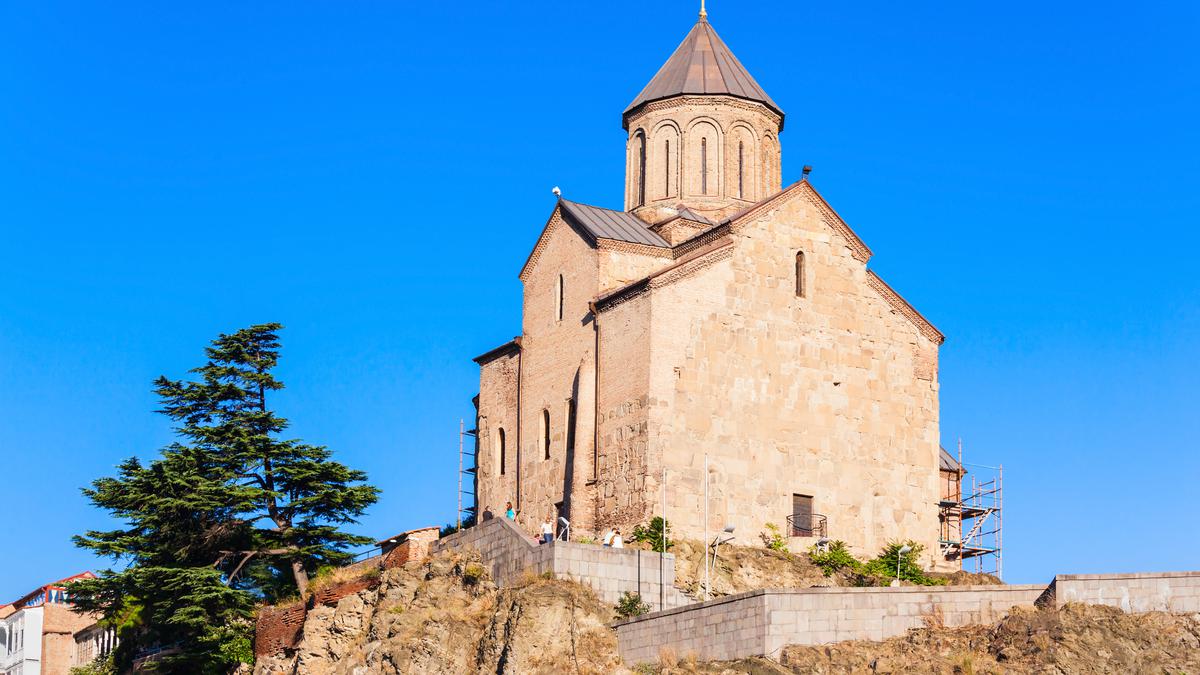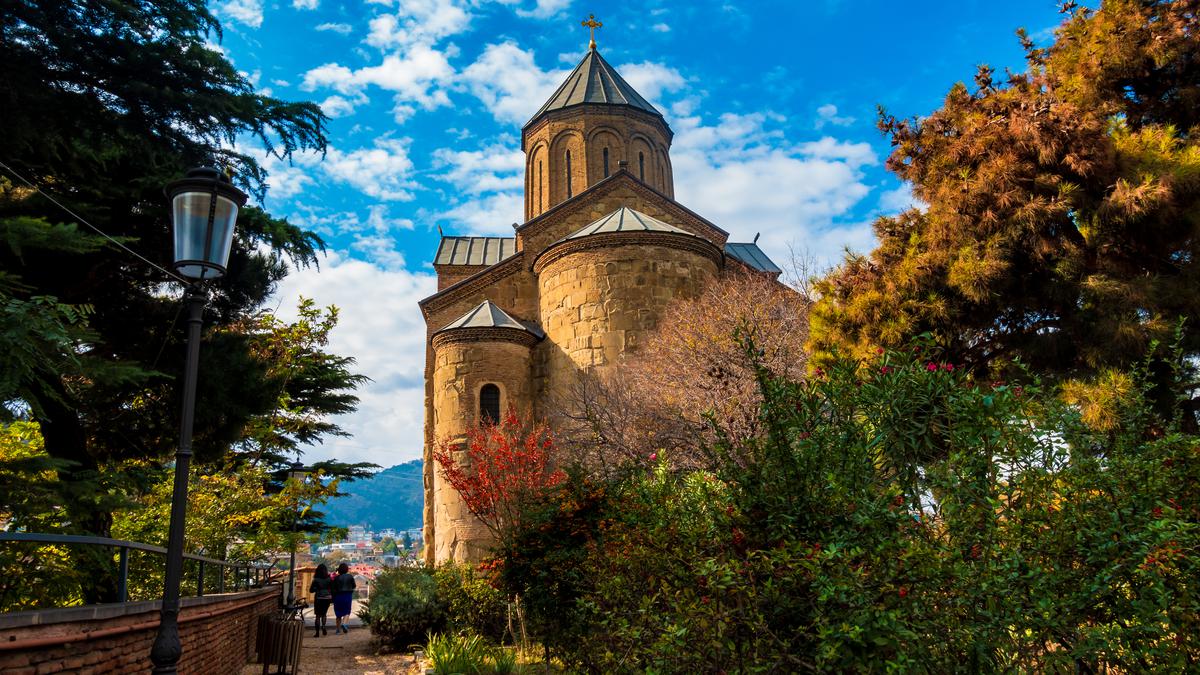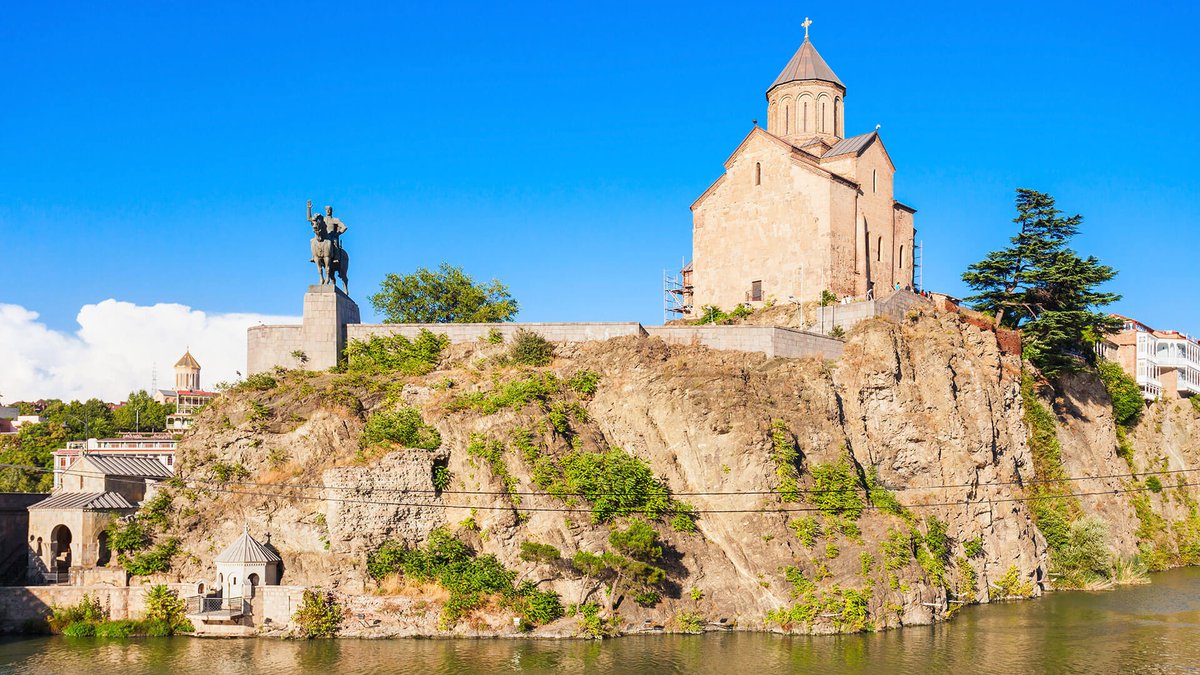
The Cathedral of the Mother of God in Metekhi Tbilisi is located in the oldest district of the capital of Georgia, on the banks of the Kura River.
The Metekhi Cathedral of the Mother of God is one of the oldest in Tbilisi, the approximate time of construction is the 6th century. The icon, after which the cathedral was named, has not survived to our time. During its history, the Metekhi Cathedral of the Mother of God was destroyed and restored, managed to visit a powder magazine. There was also a prison on its territory.
Visit the Metekhi Cathedral in Tbilisi⬇️
The Metekhi Temple and the city of Tbilisi are truly the most beautiful places in Georgia. The church is located in the eponymous district of the city. It stands on a cliff above the Kura River. This is the business card of the capital of Georgia. From anywhere in the city you can see the dome of the Metekhi temple.
The cathedral is built in the cross-domed style of rock on four supporting columns. The western wall overlooks the city, absolutely not noticeable and not interesting. The wall on the south side has been heavily reconstructed with brick, it can be seen from the observation deck. This wall is different from the others, as a vertical buttress support is attached to it.
The wall from the east has preserved its original appearance most of all, there are windows with patterned stone platbands on it. The wall on the north side has an extension - a covered gallery, which has been restored with brick from above. Few temples of the Golden Age have preserved this part of the building. The portico has a complex construction technique, as the dome has a complex masonry.
It is here that the relief image of the vine, popular in the decor of the XII-XIII centuries, has been preserved. The preserved decorations of that era in Tbilisi can be seen only here. An important feature of the facades of the church are inscriptions that are important as a monument of history. There is an inscription from 1919 on the wall from the south, there are more of them on the western wall.
The interior of the temple is not as interesting as the facades. During the reconstruction in the XVIII century, the vaults of the building were changed from circular to lancet. The murals of those times have not been preserved, all the walls are painted gray, but the icons here are interesting: “100,000 Metekhi martyrs”, “Saint Shushanik” and “Abo of Tbilisi".
The icon with the face of Abo of Tbilisi was painted in oil by M. Sabinin. Over time, it has darkened so much that it is almost impossible to see the icon. The works of this author in the original can be seen only here. He also painted the famous icon “Glory of the Georgian Church".
History
Sights of Georgia they have passed the test of time. The Metekhi Cathedral of the Mother of God is no exception. This is the oldest cathedral erected in Tbilisi. The church was built by Vakhtang I Gorgasali in the VI century. A palace was built nearby, the territory of which was surrounded by a fortress fortification. It was a royal residence. The cathedral was similar to the temple in Jerusalem on the grave of the Mother of God in the garden of Gethsemane.
The cathedral was named in honor of the icon of the Theotokos of Metech, which was kept at this place. The icon has not survived to our time. During the Mongol invasion in 1226, the palace was destroyed. The cathedral was also badly damaged. The temple was restored by Demeter II in 1289. The modern appearance of the temple has been preserved from this moment.
In 1654, Vakhtang V used the temple to store gunpowder. In 1748, the cathedral was recaptured from the Turks by Heraclius II. He orders that the Metekhi temple be restored and erects a new brick dome. The inscriptions on the walls of the temple also date back to these years.
In 1795, the cathedral burned down during the invasion of Agamadkhan, and was restored by Tsar George XIII. In 1819, A. Ermolov, the Caucasian commander-in-chief, ordered the demolition of the defensive wall and the construction of a prison on this territory. After that, the territory of the temple changed a lot, a two-story building and barracks appeared. Here, in 1903, Lado Ketskhoveli, a revolutionary of Georgia, was killed in custody.

Under Soviet rule, the prison was demolished. L. Beria intended to demolish the cathedral, but the artist D. Shevardnadze defended the architectural monument, while he was arrested, and was sentenced to death. For a long time the church did not receive parishioners. In 1979, the youth studio of the State Drama Theater was located here. Then it was an artist's workshop.
And only in 1988, in the spring, Ilya II revived the cathedral. A cross was placed on the dome and the service was resumed. With the help of donations from citizens, the iconostasis was restored. The body of the Georgian saint Shushanik rests in the Metekhi Cathedral. The legend tells about her that she was the daughter of a voivode who was married to the ruler Vasken.
He was against the rule of Vakhtang Gorgosali, and betrayed him by conspiring with the Persian Shah Peroz. Vaschen renounced his faith and relatives. Having married the daughter of the shah, he accepted someone else's religion and swore that Shushanik would also do the same.
When he returned to his homeland, he learned that after hearing about what had happened, Shushanik had not left his cell for several days in pleas for the preservation of his soul. Vasken asked his wife to leave the cell first by word, then by force. But she listened only to her mother and father. At the feast hosted by Vasken, he told everyone that he had accepted Zoroasticism, and that his wife was going to do it too.
Shushanik denied this, for which she was beaten by her husband and chained in one of the rooms of the palace. Only thanks to the priests who did not let her starve to death by secretly visiting her. Shushanik was imprisoned until her death. Believers came to the prison, who received what they needed with the help of Shushanik prayers.

The Legend of Metekhi
After reading this legend, you will know exactly what to see in the city of Tbilisi. The Shah of Ossetia Bagatar stole three-year-old Khvaramze, the sister of Tsar Vakhtang. To get his sister back, the king agreed to a duel with Bagatar.
Vakhtang swore that he would not shoot at the enemy while he was crossing the river, but he did not keep his oath - he shot and killed Bagatar. In order to receive redemption, he erected several temples, including the Metekhi Cathedral of the Mother of God. According to legend, the word metekhi means “I broke”, and for Vakhtang it meant that he did not keep his oath.













23 comments
Log in to leave a comment